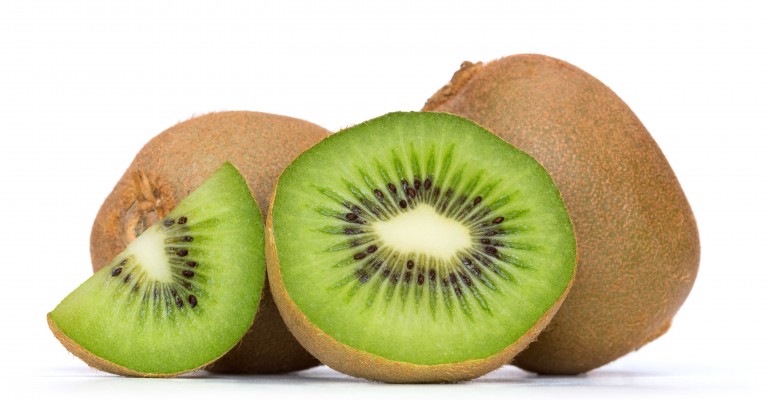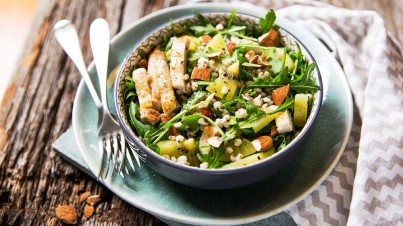The kiwifruit is the edible berry that comes from the woody perennial vine of the Actinidia family. Originating from China and otherwise called a chinese gooseberry, the name 'kiwifruit' developed during commercial production in New Zealand, where the hairy fruit resembled the furry body of the kiwi bird, a rare native flightless bird. Even the locals in New Zealand are referred to as kiwi's.
The most well known form of the kiwifruit is that of the species A.deliciosa, characterised by its hairy, pale brown/green skin, green flesh and central ring of small black seeds. This traditional green fleshed kiwifruit is well known for its unique flavour, often softer flesh texture and somewhat tartness. There are many other naturally occurring sizes and flesh colour types but these may not be commercially produced. The newest cultivated form is that of the golden kiwifruit, with a smoother skin, attractive yellow flesh and sweeter taste.
How to prepare
Most people would peel/trim the skin off, but the skin is actually quite edible, contains most of the nutrients and can also give more of the tartness flavour - you just might need to brush off some of the hair. You can cut kiwifruit in halves and eat it out with a spoon or cut into slices or even wedges. They make a handy lunch box addition and a change from the usual fruit.
Buyer's and storage guide
Quite often you'll buy kiwifruit loose or maybe in a 4 or 6 pack - some even come with their own knife/spoon combo to eat on the run.
You want to look for fruit that is fresh and firm with impeccable peel without marks or soft spots. It's best to purchase firm and allow to ripen at home, but when ripe, the fruit should yield slightly when pressing on the stem end.
Leave unripe fruit in your salad bowl to mature, ususally in 3-4 days. Ripe fruit can be kept for a couple of days in the refrigerator.

